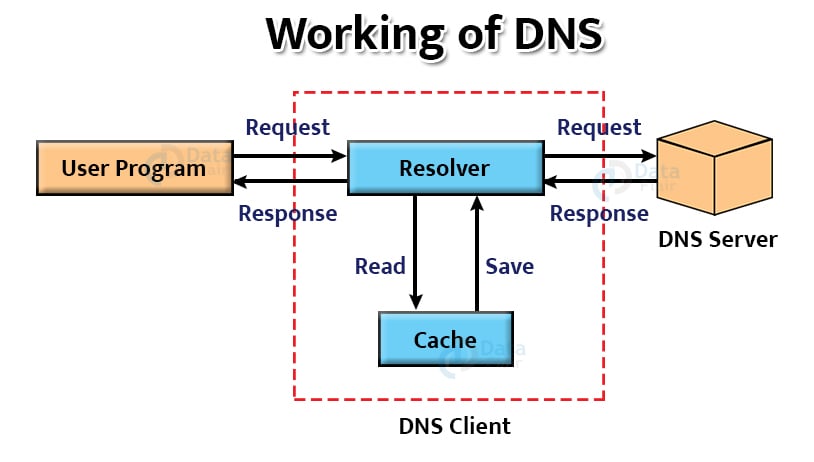Domain Name System – DNS Types and Working
FREE Online Courses: Click, Learn, Succeed, Start Now!
DNS is an abbreviation for Domain Name System. It is a directory service that offers a mapping between a host’s name and its numerical address on the network. It is an essential system for the functioning of the internet.
A domain name is assigned to each node in a tree, and a full domain name is a sequence of symbols denoted by dots.
DNS is a service that does the job of converting domain names into IP addresses. This enables network users to search for other hosts using user-friendly names rather than knowing IP addresses.
It is an application layer protocol.
Types of Domains:
Three different kinds of domains exist:
1. Generic Domains:
It categorises the registered hosts based on their general behaviour. Each node in a tree represents a domain name, which serves as an index to the DNS database. It employs three-character descriptors that indicate the kind of organisation.
Few generic domains are
- .aero – Airlines
- .gov – Government offices
- .com – Commercial Organizations
- .biz – Businesses
- .mil – Related to the military
- .coop – Cooperatives
- .edu – Educational institutions
2. Country Domains:
Country domains have the same structure as generic domains, but they utilise two-character country abbreviations (e.g., us for the United States) instead of three-character organisational abbreviations.
3. Inverse Domains:
An address is mapped to a name using the inverse domain. When the server receives a client request and the server holds only the files of authorised clients. To determine if the client is on the approved list, it sends a query to the DNS server and requests that an address be assigned to the name.
Working of DNS:
When a client, such as a web browser, submits a request including a hostname, a piece of software, such as a DNS resolver, sends a request to the DNS server to get the IP address of the hostname.
If a DNS server does not have the IP address associated with a hostname, the request is sent to another DNS server. If an IP address is received by the resolver, the request is completed using the internet protocol.
Important Terms related to DNS:
1. DNS Record:
IP address, domain name, time to live etc, are stored in records using a tree structure.
2. Namespace:
A list of potential names, either flat or hierarchical. A naming system keeps a collection of name-to-value bindings — given a name, a resolution mechanism returns the matching value.
3. Name server:
It is a resolution mechanism implementation. DNS (Domain Name System) is the Internet name service. A zone is an administrative unit, and a domain is a subtree.
Hierarchy of Name Servers:
1. Root name server:
Name servers that cannot resolve the name contact the root name servers. If no name mapping is known, it calls the authoritative name server. The mapping is then obtained, and the IP address is returned to the host.
2. Top level server:
It is in charge of com, org, edu, and all top level country domains such as uk, fr, ca, in, and so on. They hold information on authoritative domain servers and are aware of the names and IP addresses of each authoritative name server for second level domains.
3. Authoritative name server:
This is the DNS server for an organisation, and it provides authoritative host names to IP mapping for the organization’s servers. It might be maintained by a company or a service provider. As a result, the associated IP address will be returned by the authoritative domain server.
Summary:
In this article we looked at the inner workings of the Domain Name System (DNS). We also looked at the various types of domains associated with DNS, and also the various kinds of name servers that are used in the implementation of DNS.
Did we exceed your expectations?
If Yes, share your valuable feedback on Google



Thanks
Good